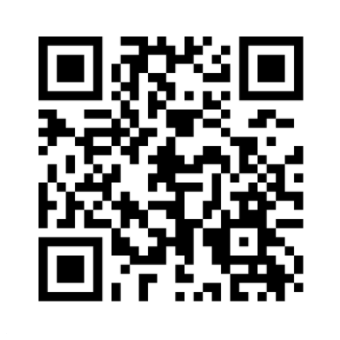MAIN ACHIEVEMENTS 2012
|
Josephson magnetometry of weak low-temperature ferromagnets. (Laboratory of Superconductivity, Dr. Phys.-Math. Sc., prof. V. V. Ryazanov)
|
||||
|
The Mach-Zehnder interferometer with novel design of edge channels The Mach-Zehnder interferometer with novel design of edge channels is created, which allows to observe an interference in the fractional quantum Hall effect regime. The device combines the advantages of the Mach-Zehnder and Fabry-Perot interferometers Its advantage is the fact that the only content of the interferential loop is quantum liquid with a fractional filling factor which greatly simplifies the analysis of the obtained experimental results.
Operating principle of the interferometer in the fractional quantum Hall effect regime is shown in Fig.1. The upper part of the figure shows the part of a real sample visualized by means of a scanning electron microscope. The interferometer operates at a temperature of 30 mK in relatively strong magnetic fields. Figure 2 shows examples of interference patterns obtained for the integer filling factors when scanning the magnetic field and the gate voltage.
The corresponding interferograms for fractional filling factor are shown in fig.3. As can be seen from this figure, for the filling factor 1/3 interference pattern appears particularly clearly. Also it was possible to observe interference with other fractional filling factors.
|
||||
| Picosecond spin conversion in quasi two dimensional exciton-polariton systems
Quasi two dimensional exciton polaritons are composite bosons that emerge through strong exciton-photon coupling in flat semiconductor microresonators. Spin-related polariton-polariton interaction results in multistability and allows fast resonator response switching when the field values in the active layer reach their critical point. The physical reason for polariton multistability lays in spectrum renormalization with a shift of effective resonance frequency that significantly surpasses the resonance spectral width. Normally, such conditions can only be achieved in a strong exciton-photon coupling mode. They make polariton multistability effect qualitatively different from the previously studied optical multistability phenomena in lasers and other nonlinear media. One of the key distinctions here is the strong sensitivity of the system to the initial resonance position which leads to new non-equilibrium transition scenarios in anisotropic or chiral polariton systems with split self-modes, for instance, due to Zeeman effect in the magnetic field. We theoretically predicted and experimentally observed (see Fig.1) the effect of threshold spin-anisotropic spectrum renormalization of chiral exciton-polariton systems that related to the condensate mode occupation number. This effect lead to excited mode spin inversion at the scale of several polariton lifetimes (tens of picoseconds) under the conditions of resonance optical pumping with gradually changing intensity and constant polarization. Due to this newly-discovered effect, a new type of compact and quick-operating optical switches and logic elements based on microresonators with a strong exciton-photon coupling can emerge.
(Laboratory of Non-equilibrium Electronic Processes, RAS Associate Member V. D. Kulakovsky) |






 Weak low-temperature ferromagnets are actively used at present as Josephson barriers and magneto-active layers in cryo-switches and superconducting phase inverters, which have the prospect of use in superconducting electronics [1]. Magnetically soft weak ferromagnet (F) providing flow of superconducting current in Josephson superconductor-ferromagnetic-superconductor junctions (Josephson SFS junctions) is necessary for realization of Josephson magnetic switches [2]. Researches of Josephson SFS contacts based on weak ferromagnetic alloy Pd0.99Fe0.01with a Curie temperature of just 15 K have been initiated in Laboratory of Superconductivity at ISSP RAS [3]. Dependence of critical current Ic on applied magnetic field H for a Nb-PdFe-Nb SFS sandwich is shown in the figure. Dependence Ic(Ф) of Josephson junctions is periodic with respect to the magnetic flux Ф with a period corresponding to Ф0 (Ф0 is a magnetic flux quantum), that allows to build the magnetic field dependence of the flux Ф through the SFS junction (shown in the right inset). The magnetic flux in the plane of the Josephson F-layer is created as by the applied magnetic field H, and by the magnetization of the ferromagnetic layer M, and the contribution of the magnetization can be easily obtained by subtracting the magnetic flux through the junction. The obtained hysteresis loop of magnetization for thin (30 nm) layer of a weak ferromagnet with dimensions of 10 x 10 µm2 is shown in the left inset. It is easy to estimate that the saturation magnetic moment of the measured F-layer doesn't exceed 10-15 А-m2.
Weak low-temperature ferromagnets are actively used at present as Josephson barriers and magneto-active layers in cryo-switches and superconducting phase inverters, which have the prospect of use in superconducting electronics [1]. Magnetically soft weak ferromagnet (F) providing flow of superconducting current in Josephson superconductor-ferromagnetic-superconductor junctions (Josephson SFS junctions) is necessary for realization of Josephson magnetic switches [2]. Researches of Josephson SFS contacts based on weak ferromagnetic alloy Pd0.99Fe0.01with a Curie temperature of just 15 K have been initiated in Laboratory of Superconductivity at ISSP RAS [3]. Dependence of critical current Ic on applied magnetic field H for a Nb-PdFe-Nb SFS sandwich is shown in the figure. Dependence Ic(Ф) of Josephson junctions is periodic with respect to the magnetic flux Ф with a period corresponding to Ф0 (Ф0 is a magnetic flux quantum), that allows to build the magnetic field dependence of the flux Ф through the SFS junction (shown in the right inset). The magnetic flux in the plane of the Josephson F-layer is created as by the applied magnetic field H, and by the magnetization of the ferromagnetic layer M, and the contribution of the magnetization can be easily obtained by subtracting the magnetic flux through the junction. The obtained hysteresis loop of magnetization for thin (30 nm) layer of a weak ferromagnet with dimensions of 10 x 10 µm2 is shown in the left inset. It is easy to estimate that the saturation magnetic moment of the measured F-layer doesn't exceed 10-15 А-m2.


 Fig.1. The upper part shows a diagram of the system steady-state response depending on the optical pumping power, its circular polarization degree being rс=0.5 (circular polarization degree of the transmission signal is marked by color), and a chart of anticipated transitions between different stability branches (polarization is shown by ellipses).
Fig.1. The upper part shows a diagram of the system steady-state response depending on the optical pumping power, its circular polarization degree being rс=0.5 (circular polarization degree of the transmission signal is marked by color), and a chart of anticipated transitions between different stability branches (polarization is shown by ellipses).